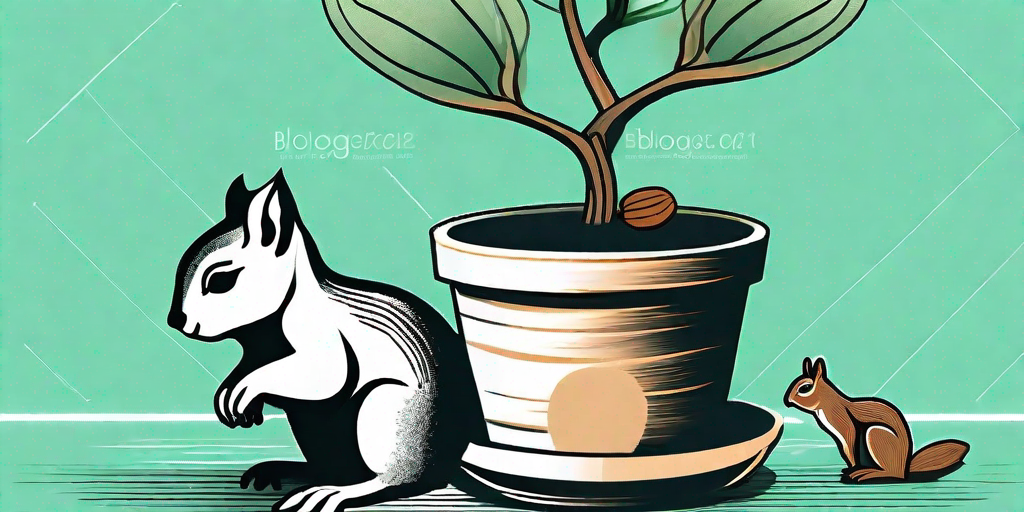
Welcome to the world of gardening, where the fruits (or in this case, nuts) of your labor can be quite literally tasted. Today, we're embarking on a nutty adventure, exploring the ins and outs of growing your very own almond tree. So, if you're ready to get your hands dirty and your taste buds excited, let's dive in!
Understanding Almond Trees: The Basics
Before we get into the nitty-gritty of planting, it's essential to understand what you're getting yourself into. Almond trees, scientifically known as Prunus dulcis, are native to the Middle East and South Asia. However, they've made themselves quite at home in Mediterranean climates around the world.
These trees are deciduous, meaning they shed their leaves annually. They can reach heights of up to 33 feet and are known for their beautiful white to pale pink blossoms. But let's not forget the star of the show - the almonds. These tasty treats are actually the seeds of the fruit that the tree produces.
Almond trees are self-pollinating, but having another almond tree nearby can increase the yield. So, if you have the space, why not consider planting two? After all, the more, the nuttier!
The Planting Process: A Step-by-Step Guide
Step 1: Choosing Your Almond Seeds
The first step in your almond tree journey is choosing the right seeds. You can purchase these from a local nursery or online. When selecting your seeds, look for those that are plump and free from cracks or blemishes.
Remember, the quality of your seeds can significantly impact the success of your tree. So, don't skimp on this step. Choose the best seeds for your nutty adventure.
Step 2: Preparing Your Seeds
Once you have your seeds, it's time to prepare them for planting. This involves a process known as stratification, which mimics the natural conditions the seeds would experience in their native environment.
To stratify your seeds, soak them in water for 48 hours. Then, place them in a bag with moist sand or peat moss and store them in the refrigerator for 6-8 weeks. This process will help to break down the seed's hard outer shell and promote germination.
Step 3: Planting Your Seeds
After the stratification process, your seeds are ready for planting. Choose a location in your garden that receives full sun and has well-draining soil. Plant the seeds 1-2 inches deep and water thoroughly.
Keep the soil moist but not waterlogged. With a bit of patience and a lot of love, you should see your seeds sprout in 2-4 weeks.
Caring for Your Almond Tree
Watering and Fertilizing
Almond trees, like any other plant, need water and nutrients to thrive. Water your tree deeply once a week, ensuring the soil is moist but not waterlogged. Overwatering can lead to root rot, which can be detrimental to your tree.
As for fertilizing, a balanced slow-release fertilizer applied in the early spring should do the trick. Remember, it's better to under-fertilize than over-fertilize. Too much fertilizer can burn the roots and harm your tree.
Pest and Disease Control
Unfortunately, almond trees can be susceptible to a variety of pests and diseases. Common culprits include aphids, mites, and fungal diseases. Regularly inspect your tree for signs of these pests and diseases and treat them promptly to prevent them from spreading.
There are many organic and chemical treatments available, so choose the one that best suits your gardening philosophy and the specific needs of your tree.
Harvesting Your Almonds
After all your hard work, it's finally time to reap the rewards. Almonds are typically ready to harvest in late summer or early fall when the hulls begin to split open. To harvest, simply shake the tree and collect the fallen almonds.
Remember to leave some almonds on the tree for the local wildlife. After all, sharing is caring!
Frequently Asked Questions
- How long does it take for an almond tree to bear fruit?
Almond trees typically start bearing fruit 2-4 years after planting. However, it can take up to 5-6 years for the tree to reach full production.
- Can I grow an almond tree in a pot?
Yes, almond trees can be grown in pots. However, they will need a large pot and regular pruning to keep their size manageable.
- Do almond trees need a lot of sun?
Yes, almond trees need full sun to thrive. They should receive at least 6-8 hours of sunlight each day.
Conclusion
And there you have it, a comprehensive guide to growing your own almond tree. It's a nutty adventure, but one that's well worth the effort. Not only will you have a beautiful tree to admire, but you'll also have a tasty and healthy snack to enjoy.
So, why not give it a try? Get your hands dirty, plant some almond seeds, and embark on your own nutty adventure. Happy gardening!











